Research Article Open Access
An Appraisal of the Medical Records of Critically Ill Neonates in Lagos, Nigeria
| Bamgboye M Afolabi1*, Abiodun Ogunwale2, Cecilia O Clement3 and Victor Inem4 | ||
| 1Health, Environment and Development Foundation, 34 Montgomery Road, Yaba, Lagos, Nigeria | ||
| 2Project Hope, Washington DC, USA | ||
| 3Department of Morbid Anatomy, University of Lagos, Idi-Araba, Lagos, Nigeria | ||
| 4Institute of Child Health College of Medicine, University of Lagos, Idi-Araba, Lagos, Nigeria | ||
| Corresponding Author : | Bamgboye M Afolabi Health, Environment and Development Foundation 34 Montgomery Road, Yaba, Lagos Tel: 2348058658029 E-mail: bmafolabi@gmail.com |
|
| Received October 21, 2014; Accepted January 03, 2015; Published January 07, 2015 | ||
| Citation: Afolabi BM, Ogunwale A, Clement CO, Inem V (2015) An Appraisal of the Medical Records of Critically Ill Neonates in Lagos, Nigeria. J Infect Dis Ther 3:196. doi: 10.4172/2332-0877.1000196 | ||
| Copyright: © 2015 Afolabi BM, et al. This is an open-access article distributed under the terms of the Creative Commons Attribution License, which permits unrestricted use, distribution, and reproduction in any medium, provided the original author and source are credited. | ||
Related article at Pubmed Pubmed  Scholar Google Scholar Google |
||
Visit for more related articles at Journal of Infectious Diseases & Therapy
Abstract
Objectives: To examine age- and gender-specific presentations and assess clinicians’ subjective prognosis and outcome of illnesses of critically ill neonates in the emergency room.
Design: A hospital-based retrospective appraisal of medical records of neonates in emergency room. Participants: Neonates admitted into the emergency room of a second-tier pediatric hospital in Lagos, Nigeria, between March 2005 and February 2007.
Intervention: Appraisal of the medical records of newly-born ill infants.
Results: There was no statistically significant difference in the mean weight of the neonates in each age group (df=4, p=0.5). Failure-to-cry (23.3%) and fever (37%, 52%, 54.2%, and 70%) were the main presentations in the first day of life and in all other age groups respectively. The most frequent diagnosis among the day old was birth asphyxia (21/30; 70%); among those 2-7 days old was neonatal jaundice (66/135; 48.9%); among those 8-14 days old (17/25, 68.0%) and those 15-21 days old (23/24, 92.0%) was neonatal septicemia and among those 22-28 days old was bronchopneumonia (5/10, 50.0%) respectively. Full blood count was the most repeated laboratory investigation requested for and antibiotics the most frequently-prescribed medication. Overall, there was a positive correlation (r=0.28, p=0.00) between clinicians’ subjective prognosis and outcome of illness although this was not reflected among the day-old neonates. The highest mortality rate (30.0%) was among the day-old neonates.
Conclusion: Birth asphyxia was the dominant illness that brought 24-hour old neonates to the Intensive Care Unit in the health facility of study. Mortality was also highest in this age group. Jaundice, septicemia and bronchopneumonia were other leading causes of neonatal morbidity and mortality according to the age group. Clinicians’ prognosis directly correlated with disease outcome.
| Keywords | |
| Neonatology; Tropical infective diseases; Birth asphyxia; Jaundice; Septicemia; Meningitis; Tetanus; Morbidity; Mortality; Sub- Saharan Africa | |
| Introduction | |
| It is now well-established that child mortality continues to decline globally due to rapid socioeconomic development and implementation of child survival interventions, although approximately 8·8 million children still die every year before their fifth birthday [1]. The most important causes of death among these under-fives were found to be pneumonia, diarrhea, and preterm birth complications [2]. Globally, over three million babies in their first their first month of life die annually though the global neonatal mortality rate has declined by 28% in the two decades between 1990 (33.2 deaths per 1000 live births) and 2009 (23.9 deaths per 100 live births). About 99% of all neonatal deaths occur in low- and middle-income countries and 70% of global deaths among neonates occur in just two WHO regions: Africa and South-east Asia [3]. Among neonates in sub-Saharan Africa (SSA), a variety of life-threatening clinical conditions that necessitate rapid interventions, mostly infectious diseases, have been documented [3,4]. Not diagnosed and treated promptly, these clinical conditions, such as septicaemia, meningitis, jaundice, birth asphyxia and tetanus, continue to raise the already high neonatal mortality in SSA. Neonatal deaths account for over 40% of all deaths among children below the age of five years 90% of which deaths occur in low and middleincome countries (LMIC) [4]. It is now widely acknowledged that while deaths of children below the age of five years is declining, the proportion of deaths of newborn is increasing [5]. In SSA, most babies are born at home, most likely in unhygienic environments. In addition, handling of the newborn by relatives and others is often a source of early infections to the neonate. It is not clear where most of neonatal deaths occur – home, in transit to the health facility or at the health facility. Since intervention programs aimed at infectious diseases are decreasing mortality among older infants and children, the relative contribution of neonatal mortality is increasing, and it is becoming more important to gather not only accurate data about neonatal event [6] but also possible factors relating to the death of the neonates. Since medical intervention of the ill neonate is invariably left in the hands of clinicians at health facilities, it is imperative to assess medical training, competence and acumen of the clinicians who handle neonatal cases, an important contributory factor to high or reduced neonatal mortality. | |
| There is a lacuna in the estimates of complete clinical management of neonates including prognosis and outcome of neonatal illness, especially in LMIC. This study was designed to evaluate presentations and diagnoses of neonatal illnesses in urban Lagos, Nigeria. The objectives of this study were to examine age-specific illness presentation and to assess whether clinicians’ prognoses correlate with outcomes of neonatal illness. | |
| Methodology | |
| Study site | |
| The study was conducted at a secondary health facility that is solely responsible for managing pediatric illnesses in Lagos State, Nigeria. The free malaria treatment policy of the state is still on-going. The facility also serves as center for nutrition and immunization as well as for emergency cases. The health facility where this survey took place is located on Lagos Island and has been described elsewhere [7]. There are a minimum of 20 beds, about 6 trained nurses and 4 medical doctors in the intensive care unit of the facility. Data for this study were retrieved from the medical records of neonatal patients in the intensive care unit. | |
| Study design | |
| This is a retrospective descriptive appraisal of medical records of neonates that were admitted into the emergency ward of a pediatric health facility in the two years spanning March 2005 to February 2007. The medical record of each neonate in the study period was retrieved and data contained therein transcribed into a spreadsheet. | |
| Ethics committee approval | |
| Necessary Ethics Committee approval of the Lagos State Health Management Board, Campbell Street, Lagos, Nigeria was secured before carrying out this study. Informed consent was obtained from care-givers where feasible or from representatives of subjects of the study. | |
| Informed consent | |
| Informed consent was collected from care-givers of the children who were still on admission. Hospital social workers were recruited to trace relatives of neonates who had been discharged or who have died, using addresses recorded in the patients’ case notes. | |
| Data collection | |
| Two persons, a male and a female were recruited to collect data from the hospital medical records. The data collectors were given a oneday training prior to actual data collection, which took three months. | |
| Definitions | |
| For the purpose of this paper, very early neonatal period was defined as the first 24 hours of life, early neonatal period as the 2nd up till the 7th day of life, mid as the 8th up till the 14th, late as the 15th up till the 21st and very late as the 22nd up till the 28th day of life. The universal definitions of jaundice, septicemia, sepsis meningitis and tetanus were followed. Variables were accordingly coded for ease of statistical analysis. Common prognosis as recorded in the case notes of these neonates were fair, poor, very poor and extremely poor. The attending clinicians recorded common outcome of illnesses as “discharged home”, “Died”, Discharged against Medical Advice (DAMA)” or “Still on admission”. | |
| Data analysis | |
| Data of each neonate was coded for anonymity, ease of reference, avoidance of bias and fed into a lap top computer, cleaned and crosscheckedfor errors. Analysis of the cleaned data was done using Statistical Package for Social Sciences version 16 for Windows software. The data were analyzed descriptively obtaining frequencies and percentages, and inferentially using chi-square test to determine associations, where appropriate. Chi-square was used to test association and a p-value ≤ 0.05 was regarded as significant. Confidence Interval (CI) in this study refers to a range of values for specific disease entity constructed so that this range has a specified probability of including the true value of that specific disease. | |
| Results | |
| Two hundred and twenty four neonates (135 males and 89 females) were recorded as being admitted into the Emergency Room (ER) of Massey Street Children’s Hospital (MSCH) between March 2005 and February 2007. Figure 1 shows that majority of the neonates were aged 2-7 days while 13.4% were one-day olds. | |
| One-day old neonates | |
| Table 1 indicates the demographic characteristics, illness presentation, management, prognosis and outcome of day old neonates (n=30) in the study. There was no statistically significant difference in the birth weight or body temperature of both male and female study patients. In all 17% of these neonates weighed less than 2.5 kg at birth. The most common presentations in this age group were failure-to-cry (23.3%), difficulty in breathing (13.3%), fever (10.0%) and irregular, jerking body movements (10.0%). The most frequent diagnoses by attending clinicians were birth asphyxia (21, 70.0%) and septicemia (15, 50.0%) and the most prevalent laboratory investigations requested for were full blood count (21, 70.0%), electrolytes, urea and creatinine [E/U/Cr] (15, 50.0%) and interestingly, malaria parasites (5, 16.7%). Antibiotics were the most prescribed medications, especially gentamycin (19, 63.3%) and Ceftazidime (15, 50.0%). Interestingly, almost 47% and 30% of these neonates were given 10% dextrose water and 50% dextrose water respectively while 37% of them received oxygen for resuscitation. Fifteen (50%) of these neonates were certified healthy enough to be discharged home and 5 (17%) were discharged against medical advice. Mortality rate among this age-group was 33.3%. The table also shows the gender differentiation in the presentation, management and outcome of illness. | |
| Neonates aged 2-7 days | |
| A total of 135 neonates (80 males, 55 females) in the first week of life (apart from the day old neonates) were admitted to the ER during the study period. Table 2 shows the demographic characteristics and other variables of the neonates. Fever (50, 37.0%), yellowness of eyes (46, 34.1%), not sucking breast (30, 22.2%) and difficulty in breathing (21, 15.6%) were the most common presentations among these neonates. Neonatal septicaemia (93, 68.9%) ranked first among the diagnoses, followed by neonatal jaundice (73, 54.1%) and birth asphyxia (17, 13.0%). Of the 346 investigations requested for, full blood count accounted for 74.8%, E/U/Cr for 34.8% and serum bilirubin for 34.1%. Of the 502 prescriptions written in this age-group, 45% were for antibiotics, 13% for intra-venous fluids and 5% were for oxygen. Clinicians ordered for phototherapy for 19 (4.3%) neonates. The most common route of medication administration was intravenous (327, 82.2%), indicating 2.4 intravenous route of medical administration per neonate in this age group. In all, mortality rate in this age group was 30.4% while 66 (48.9%) were discharged home. | |
| Neonates aged 8-14 days | |
| Table 3 illustrates data on the 25 (17 males, 8 females) neonates aged 8-14 days in the study. Fever was the predominant (13, 52.0%) presentation followed by yellowness of eyes (9, 36.0%). The most frequent diagnosis was neonatal septicemia (17, 68.0%), followed by jaundice (6, 24.0%). There was no significant gender differentiation in the presentation or diagnosis of the illnesses of these neonates. Full blood count (14, 82.4%), E/U/Cr (7, 41.2%) and malaria parasitaemia (5, 29.4%) were laboratory investigations requested for more among males than among females in this age group. While Gentamycin antibiotic was prescribed for all (100.0%) the females, Ampicillin-Cloxacillin was prescribed for only 2 (11.2%) males. Mortality in this age group was 5 (20%) shared by 3 (60.0%) males and 2 (40%) females. | |
| Neonates 15-21 days old | |
| Table 4 illustrates data on neonates 15-21 days old among whom were 15 males and 9 females. The mean (±SD) weight in kg (3.0±0.9) of these neonates was not significantly different from those of the 1 day (3.0 ± 0.6), 2-7 days (3.0± 0.8) or 8-14 days old (3.1 ± 0.9) neonates. The clinical presentation of fever was slightly more prevalent among females (5, 55.6%) than among males (8, 53.3%) though the risk ratio did not reach any level of statistical significance. Neonatal septicemia was diagnosed more for females (9, 100.0%) than for males (14, 93.3%). Intravenous route was the most prominent route of medication administration, especially in females (25, 277.8%). Clinicians’ subjective prognoses indicated that fourteen (58.3%; males=8 (53.3%), females=6 (66.7%)) neonates were admitted in poor condition. In all 18 (75%) neonates (males=13 (86.7%), females=5 (55.6%) were discharged home while only 2 (8.3%) neonates were discharged against medical advice. In this age group, only 3 (12.5%) neonates (male=1, female=2) died. | |
| Neonates aged 22-28 days | |
| As shown in Table 5, the most common complaint in this age group was fever (70%) followed by cough (60%), fast breathing (30%) and watery stool (30%). Bronchopneumonia (50%) and meningitis (30%) were the most prevalent of all diagnoses, followed by septicaemia, gastroenteritis and convulsion in equal proportion (20%). Majority of the requests for laboratory investigation were for full blood count (50%; males=25%, females=66.7%) and examination for malaria parasitaemia (50%). Intranasal oxygen was administered only to females (50%) and antibiotics, especially gentamycin, were prescribed maily to females (83.3%). | |
| In all, 60% of patients in this age group were discharged home, 30% were discharged against medical advice and 10% were still on admission as at the time data was recorded into their medical records. | |
| Table 6 illustrates an overall high degree of positive correlation between clinicians’ subjective prognosis and outcome of neonatal illnesses. When segregated along age groups, however, positive correlations existed only in all and in male and female neonates aged 2-7 days (r=0.3, p=0.00; r=03, p=0.003; r=0.3, p=0.04 respectively) and also in all but mainly in male neonates aged 8-14 days (r=0.5, p=0.02; r=0.5, p=0.03 respectively) indicating promising accuracy in clinicians’ prognosis in assessing neonatal illnesses. | |
| Figure 2 indicates outcome of the illnesses presented at the emergency room while Figure 3 shows that the overall mortality among the study group was 55 (24.6%) made up of 9 (30.0%) among neonates one-day old, 38 (28.1%) among those 2-7 days old, 5 (20.0%) among the 8-14 days old and 3 (12.5%) among those aged 15-21 days. In Figure 4, neonatal mortality in this study was compared with WHO’s data of 2000 which indicate some measure of improvement and that with more effort MDG goals relevant to infant mortality can still be achieved. Figure 5 is a graphical presentation of the decrease in neonatal mortality by age group. The differences in the percent mortality among neonates in the first day of life (30.0%) and among those in other age groups were not statistically significant except those aged 22-28 days old (χ2=3.87, p=0.05). | |
| Discussion | |
| This might be one of the few studies to categorize neonatal life into five periods as stated above. The high prevalence of some disease entities reported here is therefore specific to each neonatal period. The most significant finding reported in this study is that most deaths in neonatal period occurred in the first day of life. Results from our study is in consonance with WHO’s statement that the risk of neonatal death is highest within the first 24 hours after delivery [4]. The 30% firstday neonatal mortality in our study is higher than the Demographic Health Survey (DHS) of Nigeria for 1999, 2003 and 2008 as reported by Padmadas et al. [8]. However it should be noted that our study was facility-based while Padmadas et al. study [8] was based on DHS. Factors responsible for neonatal deaths, especially within the 24 hours of life, could be associated with maternal, perinatal and neonatal circumstances, lack of adequate and appropriate care and weak health system. In low/middle income countries like Nigeria, there are many pregnant women who give birth at home, therefore unsuitable and belated care seeking can significantly contribute to neonatal mortality [3]. In all, about 17% of day-old neonates could be categorized as low birth weight (birth weight <2.5 kg). Low birth weight is a major factor that predisposes to many health-related conditions such as respiratory distress syndrome, symptomatic patent ductus arteriosus (PDA), late onset adrenal insufficiency of prematurity and necrotizing enterocolitis with or without intestinal perforation [9]. | |
| In this study, birth asphyxia was more common for male (14, 73.7%) than female neonates (7, 63.6%), a finding that is in discord with the suggestion of Lee [10] that female gender was associated with decreased risk for birth asphyxia death. The overall 70% prevalence of facility-based birth asphyxia was much higher than the 14.2% reported by Bang et al. [11] in their community-based study in India and the 29.4% reported by West and Opara [12] in another facility-based study in Port-Harcourt, Nigeria. We were not certain the role of antibiotics in the management of birth asphyxia, a condition that may be due to antepartum, intra-partum, infant and maternal risk factors. However, it is possible that the intent of the attending clinician is a broad-spectrum antibiotic cover for the ailing one-day old neonate. We were also not sure of the administration of 10% and 50% dextrose/water to these infants. This may be topics for further study. | |
| Fever and yellowness of the eyes were common presentations among the 2-7 days old neonates in this study and jaundice (48.9%) was the most prevalent diagnosis among these neonates, a figure that is lower than the 62.2% reported by Asindi et al. [13] but higher than the 14.5% reported by Narang et al. [14], the 17.9% reported by Effiong et al. [15] and the 35% reported by Onyearugha et al. [16]. The complications presented by jaundice, especially in preterm infant, are not always averted by phototherapy or by Exchange Blood Transfusion. Though probably physiological in etiology, the neonatal jaundice reported in this study could also have been as a result of sepsis neonatorum, polycythemia, concealed haemorrhages such as cephalhematoma and subarachnoid bleed and from increased enterohepatic circulation, neonatal hepatitis, extra hepatic biliary atresia, non-optimal sucking and nursing, glucose-6-phosphate-dehydrogenase and metabolic disorders. | |
| Other factors that may predisposed to the high rate of jaundice in this age-group may be related to increase in rural-urban drift which increase the general population and increased health-facility consultation due to free health services for children in Lagos State. In addition, exogenous substances such as “camphor” and sepsis may trigger jaundice especially in G6PD deficient neonates. Incidentally, Exchange Blood Transfusion (EBT) was not reported as one of the managements of the children with jaundice in this study, although oxygen, phototherapy and Vitamin K were given. The degree of jaundice was also not recorded and G6PD was not among the investigations requested for. The mortality rate of 28.1% reported in this study may be due to delay in presenting the case, the severity of hyper-bilirubinemia or lack of modern technique in the management of the condition. | |
| The 68% prevalence of neonatal septicaemia reported among those aged 8-14 days and the 92% among those aged 15-21 days in this study are higher than the 49% reported by Meremikwu [17] in the South-south geopolitical location of Nigeria and the 33% reported by Iregbu et al. [18] in a facility-based study in a similar location within the country. However, it should be noted that most studies analyzed the entire neonatal period and did not distinguish very early (24 hours old), early (2-7 days old), middle (8-14 days old), late (15-21 days old) and very late (22-28 days old) neonatal periods. When segregated by gender, neonatal septicemia was more frequent among females than among males. We did not know why the incidence of septicemia was higher among females. It was also surprising that blood culture was not order for to investigate possible causative organisms for this condition. | |
| Conclusion | |
| This hospital-based retrospective study details a high neonatal mortality within the first 24 hours of life. This could be related to various circumstances before and during delivery. The incidence of birth asphyxia was very high. Reducing neonatal mortality due to birth asphyxia requires appropriate and adequate care at the time of labor and at childbirth combined with neonatal resuscitation by skilled birth attendant. Skilled home health care by trained community health workers is essential if neonatal mortality is to be reduced in Nigeria. Community Health Workers are recognized and trusted by the community and probably know about the pregnancy from the beginning. About 17% of neonates in the first 24 hours were born with low birth weight. Jaundice and septicemia were more common during the early, mid and late neonatal periods while bronchopneumonia was specific to the very late neonatal period. No death was recorded in the very late neonatal period. | |
| Study Limitations | |
| This study has some notable limitations that need explaining. One is that the data for this study was gathered from the Emergency Room and is subject to the accuracy of the clinicians and the nurses who developed the initial record. This study also included only neonates and therefore the extent to which the results can be extrapolated to older children is unclear. The sample size was few, requiring either a multiplecenter study or a prospective study of at least 5 years at a single, or more health facilities. In addition, this study did not collect the results of APGAR score, the laboratory investigations performed on the study neonates and the length of stay of these neonates in the emergency room. These will be taken into consideration in future studies. | |
| Acknowledgements | |
| The authors are grateful to the neonates and their parents/ legal guardians and to the many healthcare professionals who supported the data collection. We thank the Lagos State Commissioner for Health and is team for their valuable assistance. | |
References
- You D, Wardlaw T, Salama P, Jones G (2010) Levels and trends in under-5 mortality, 1990-2008. Lancet 375: 100-103.
- Black RE, Cousens S, Johnson HL, Lawn JE, Rudan I, et al. (2010) Global, regional, and national causes of child mortality in 2008: a systematic analysis. Lancet 375: 1969-1987.
- Herbert HK, Lee AC, Chandran A, Rudan I, Baqui AH (2012) Care seeking for neonatal illness in low- and middle-income countries: a systematic review. PLoS Med 9: e1001183.
- World Health Organization (2014) Management of newborn illness and complications.
- Herbert HK, Lee AC, Chandran A, Rudan I, Baqui AH (2012) Care seeking for neonatal illness in low- and middle-income countries: a systematic review. PLoS Med 9: e1001183.
- Kalter HD, Hossain M, Burnham G, Khan NZ, Saha SK, et al. (1999) Validation of caregiver interviews to diagnose common causes of severe neonatal illness. PaediatrPerinatEpidemiol 13: 99-113.
- Afolabi BM, Salako LA, Mafe AG, Ovwigho UB, Rabiu KA, et al. (2001) Malaria in the first 6 months of life in urban African infants with anemia. Am J Trop Med Hyg 65: 822-827.
- Padmadas SS, Johnson FA, Madise NJ, Falkingham J. First-day Neonatal Mortality in the Developing world: A Neglected Crisis? Paper submitted to the XXV11 IUSSP International Population Conference, Busan, Korea 26-31 August 2013: Session 314 Health and mortality in childhood, including differences by sex
- Kusuda S, Fujimura M, Uchiyama A, Totsu S, Matsunami K; Neonatal Research Network, et al. (2012) Trends in morbidity and mortality among very-low-birth-weight infants from 2003 to 2008 in Japan. Pediatr Res 72: 531-538.
- Lee ACC (2007) Risk Factors for Birth Asphyxia Mortality in a Community-based setting in Southern Nepal. MPH Capstone, Johns Hopkins School of Public Health.
- Bang AT, Bang RA, Baitule S, Deshmukh M, Reddy MH (2001) Burden of morbidities and the unmet need for health care in rural neonates--a prospective observational study in Gadchiroli, India. Indian Pediatr 38: 952-965.
- West BA, Opara PI (2013) Perinatal asphyxia in a specialist hospital in Port Harcourt, Nigeria. Niger J Paed 3: 206 – 210
- Asindi AA, Archibong EI, Mannan NB (2002) Mother-infant colonization and neonatal sepsis in prelabor rupture of membranes. Saudi Med J 23: 1270-1274.
- Narang A, Gathwala G, Kumar P (1997) Neonatal jaundice: an analysis of 551 cases. Indian Pediatr 34: 429-432.
- Effiong CE, Aimaku VE, Bienzle U, Oyedeji GA, Ikpe DE (1975) Neonatal jaundice in Ibadan. Incidence and etiologic factors in babies born in hospital. J Natl Med Assoc 67: 208-213.
- Onyearugha CN, Onyire IBN, Ugboma HAA (2011) Neonatal jaundice: Prevalence and associated factors as seen in Federal Medical Centre Abakaliki, Southeast Nigeria. Journal of Clinical Medicine and Research 3: 40-45.
- Meremikwu MM, Nwachukwu CE, Asuquo AE, Okebe JU, Utsalo SJ (2005) Bacterial isolates from blood cultures of children with suspected septicaemia in Calabar, Nigeria. BMC Infect Dis 5: 110.
- Iregbu KC, Elegba OY, Babaniyi IB (2006) Bacteriological profile of neonatal septicaemia in a tertiary hospital in Nigeria. Afr Health Sci 6: 151-154.
Tables and Figures at a glance
| Table 1 | Table 2 | Table 3 | Table 4 | Table 5 | Table 6 |
Figures at a glance
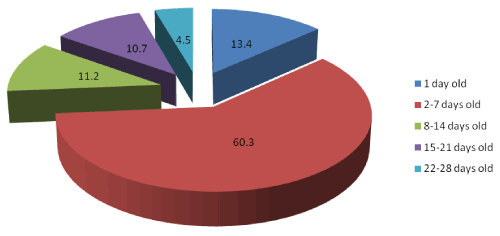 |
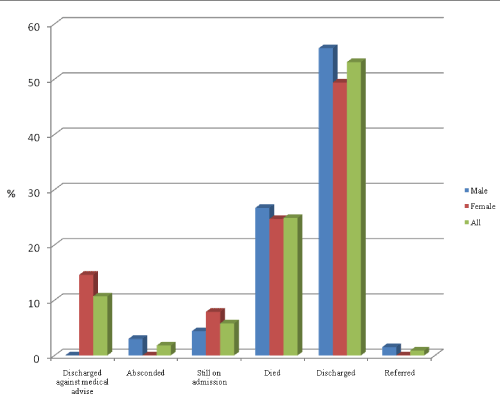 |
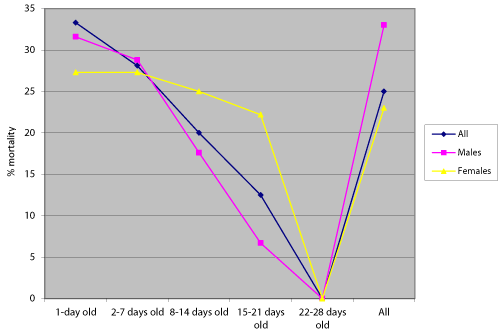 |
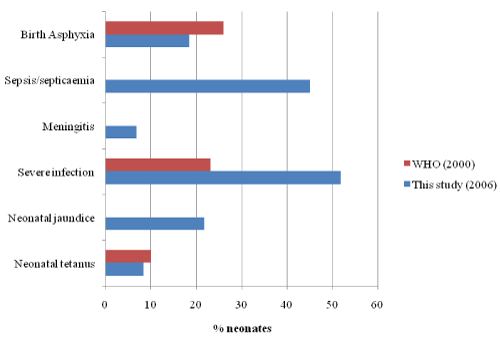 |
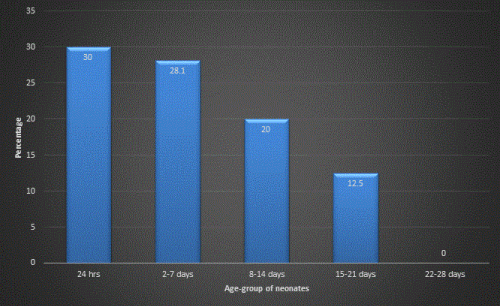 |
||||
| Figure 1 | Figure 2 | Figure 3 | Figure 4 | Figure 5 |
Relevant Topics
- Advanced Therapies
- Chicken Pox
- Ciprofloxacin
- Colon Infection
- Conjunctivitis
- Herpes Virus
- HIV and AIDS Research
- Human Papilloma Virus
- Infection
- Infection in Blood
- Infections Prevention
- Infectious Diseases in Children
- Influenza
- Liver Diseases
- Respiratory Tract Infections
- T Cell Lymphomatic Virus
- Treatment for Infectious Diseases
- Viral Encephalitis
- Yeast Infection
Recommended Journals
Article Tools
Article Usage
- Total views: 15173
- [From(publication date):
February-2015 - Jun 30, 2025] - Breakdown by view type
- HTML page views : 10477
- PDF downloads : 4696
